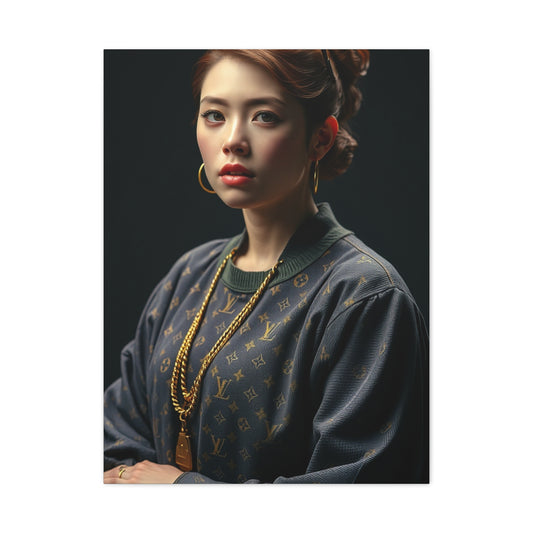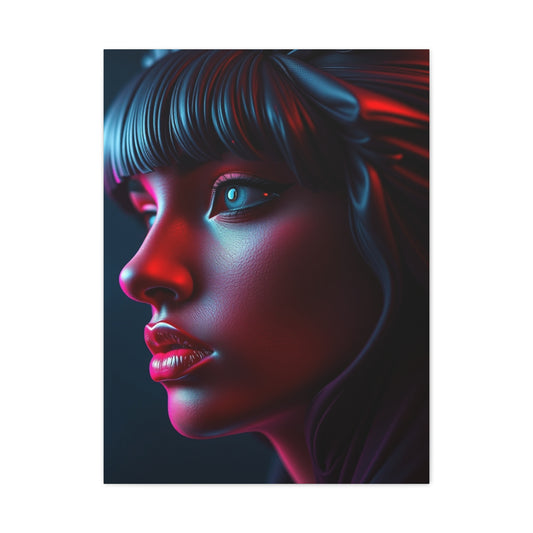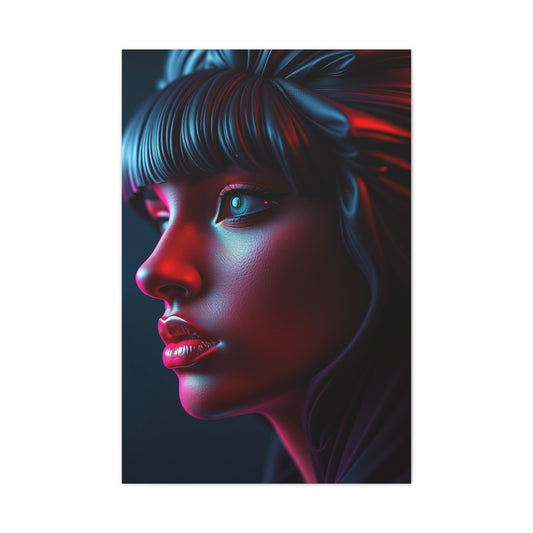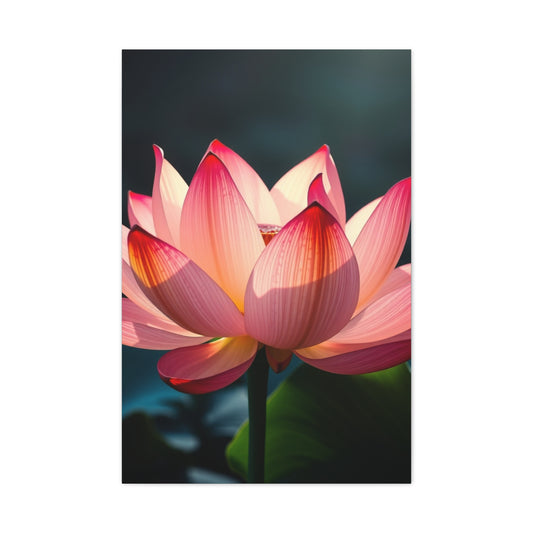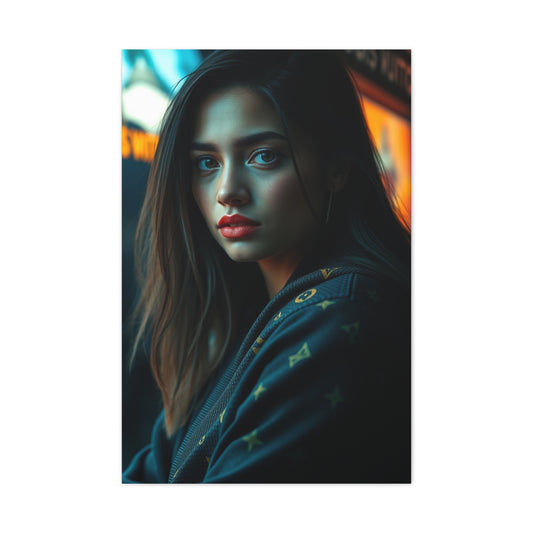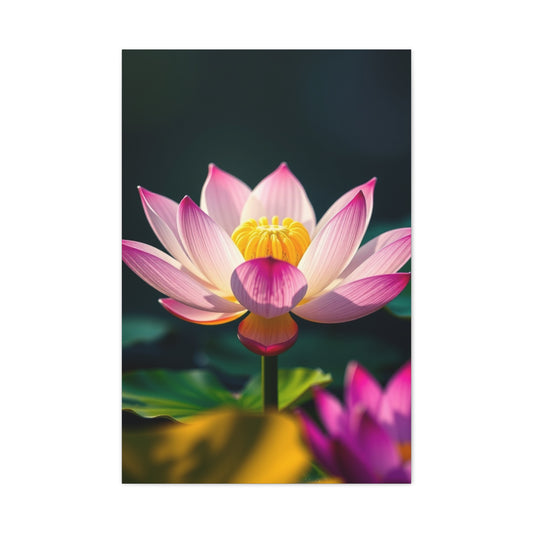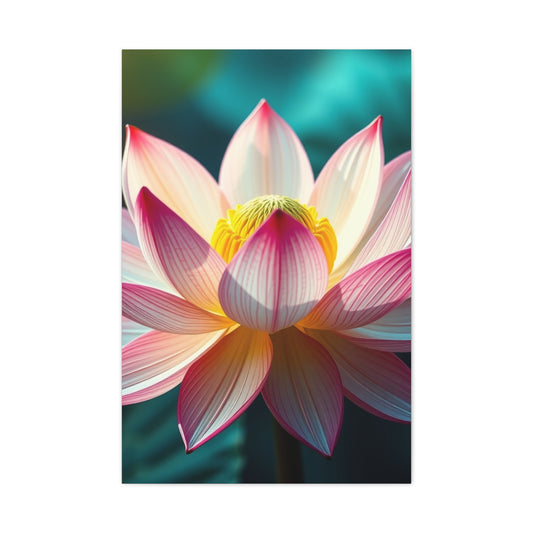Capturing the perfect balance between authenticity and artistry in portrait photography is an ongoing challenge for many photographers. This challenge becomes even more pronounced for those transitioning from photojournalism to more traditional styles of photography, as the concept of "posing" can seem at odds with the raw, unfiltered authenticity that photojournalism often strives to achieve. In the quest for natural, candid moments, the use of conventional poses may occasionally appear forced or stiff. Yet, after years of refining my approach, I discovered a way to harmonize these two aspects of photography: the relaxed pose. This approach allows you to capture genuine, unposed moments while still honoring the artistry and composition that portraiture demands.
The beauty of the relaxed pose lies in its simplicity. It’s not about dictating every movement or enforcing rigid stances. Instead, it’s about drawing out the essence of a person’s personality, capturing them in a moment that feels natural yet visually engaging. While the final image should reflect the rawness of the subject’s personality, it is essential to understand that achieving this balance starts well before you ever click the shutter.
The foundation of capturing authentic portraits lies in one crucial element: trust. If your subject doesn't feel comfortable, it will show in their body language and facial expressions. That’s why building trust is the most important first step in any photoshoot. When your subject feels at ease, it allows for the creation of images that are genuine, expressive, and true to the moment.
Building Trust and Comfort Before the Camera Comes Out
Before you even pick up your camera, it’s important to build a rapport with your subject. Simply diving into the session with the expectation that they will immediately feel relaxed is unrealistic. Whether it’s a family portrait or a professional headshot, your subject may have some nervousness about being in front of the camera. To alleviate this, take a few minutes to engage in a friendly conversation. Ask about their interests, passions, or anything they are excited about regarding the shoot. This can help break the ice and set a more relaxed tone for the session. Establishing a connection with your subject not only eases any tension but also lets them know that you see them as more than just a subject to photograph; you are there to truly capture who they are.
A significant part of creating trust with your subject is setting expectations early. Many people feel vulnerable during a photoshoot, and by providing some clarity about what will happen, you can help alleviate those nerves. Let your subject know what they can expect from the session and explain the general flow of the process. They should understand that they don’t need to worry about the technical aspects or how they look in every shot. Instead, they should focus on being present and engaged in the moment. Offering small, simple instructions like “don’t worry about looking at the camera unless I ask you to” will not only direct their actions but also create a sense of comfort and structure within the session.
As the photographer, your own demeanor plays an essential role in fostering a comfortable environment. The way you interact with your subject and your attitude toward the session directly affect their level of comfort. If you come across as calm and confident in your ability to capture their portrait, your subject will feel more at ease. This confidence doesn’t mean being forceful with your direction, but rather projecting a sense of assurance and professionalism that your subject can rely on. A relaxed photographer leads to relaxed subjects.
Observing and Encouraging Natural Body Language
Once you’ve established a connection with your subject and they feel more at ease, the next step is to direct them toward a relaxed pose. At this point, it’s essential to move away from rigid guidelines and allow the subject’s body language to naturally guide the session. This doesn’t mean abandoning direction altogether, but instead, observing the subtle movements and stances they make throughout the shoot. In many cases, the best shots come from these seemingly spontaneous actions. These moments are often fleeting, unnoticed by the subject, but as the photographer, it’s your role to be hyper-aware, waiting for that perfect gesture or shift in posture.
For example, a couple’s intimate moment may unfold naturally without any input from you. A simple gesture, such as the man wrapping his arms around the woman from behind, can evoke a deep sense of intimacy that no posed stance could achieve. These unspoken moments are powerful and communicate genuine emotion, but it’s your job as the photographer to notice and enhance these small movements. Sometimes the most profound connections occur without any verbal direction at all. The look exchanged between two lovers, a mother’s gentle touch on her child’s shoulder, or the soft tilt of a person’s head as they listen intently are the moments that express the raw essence of a relationship or an individual’s state of mind.
In these situations, your role is less about dictating what the subject should do and more about observing how their body speaks. Your presence should feel almost like a silent conversation, guiding them subtly through soft, unobtrusive cues. You can either allow them to continue in their natural stance or make gentle adjustments if needed to elevate the image further. These fine-tuning moments don’t need to be drastic changes. It’s about recognizing when a slight shift in posture or a softening of the eyes can amplify the mood or story you’re trying to capture. Sometimes, it’s as simple as guiding someone to relax their shoulders or take a deep breath to release tension, which in turn creates a more natural and flattering pose.
At times, a subject may inadvertently create a pose that feels stiff or uncomfortable. In these situations, offering subtle corrections can go a long way. Rather than instructing them to completely change their stance, try suggesting small adjustments that can help them feel more at ease. For instance, if a subject is clasping their hands too tightly, guiding them to relax their grip can make a significant difference in the final image. In some cases, this minor shift in posture can completely transform the emotional tone of the photograph, bringing more authenticity and comfort to the frame. Rather than forcing a subject to hold a pose that might feel unnatural, guide them toward a position where they feel more connected to themselves, and by extension, more connected to the moment.
An essential skill for achieving relaxed posing is knowing when to step back and simply let the subject be themselves. Sometimes, the most genuine moments arise when the subject isn’t being “posed” at all. It’s tempting to want to direct every action, but in doing so, you may lose the spontaneity and authenticity that make a photograph stand out. By taking a less hands-on approach and letting the subject’s movements and expressions unfold naturally, you can create images that are more genuine and engaging. Often, those moments happen when the subject is at ease, when they are not overthinking the image or how they look.
This freedom to move, to breathe, and to shift naturally within the frame often leads to the most unguarded and emotive portraits. There’s a magic that happens when the subject isn’t focused on performing for the camera. They are simply existing in the moment, and as a photographer, you are there to capture their truth. These candid shots convey the most raw, authentic emotions because they are less about what the subject looks like and more about how they feel. The feeling in a photograph, the energy it transmits, is often a product of the subject’s comfort and the space you create for them to relax into their natural self.
You can guide your subject gently, but there will always be a moment when the best image is the one that happens naturally. The moment when a subject shifts unconsciously, their body language tells a story that words cannot. It’s these moments of authenticity that transcend the boundaries of the frame, that resonate with viewers on a deeper emotional level. As a photographer, your job is to know when to provide subtle direction and when to take a step back and let the story unfold in its own organic way.
Guiding with Subtle Instructions and Leading by Example
While it’s crucial to allow for natural body language and expressions, there will still be moments when you need to provide gentle direction. Certain poses or movements may be difficult for your subject to interpret through words alone. In such cases, don’t hesitate to demonstrate the pose yourself. This can be incredibly helpful for complex positions or when you want to achieve a very specific angle or posture. When you physically demonstrate what you are asking, it creates a clearer visual understanding for your subject and makes them more likely to relax into the pose.
For example, if you want your subject to lean in a certain direction or angle their body in a specific way, showing them through your own posture can eliminate confusion and allow them to mirror your movements. People are often more comfortable following a visual cue than interpreting verbal instructions alone. When your subject sees you confidently demonstrating the desired pose, it reduces any uncertainty and encourages them to participate more fully in the creative process.
By demonstrating poses, you also convey a sense of partnership. Instead of them feeling as though they are being directed or controlled, they will see themselves as an active participant in creating the portrait. This partnership allows them to relax, knowing that you are guiding them with confidence and that they can trust you to capture their most authentic self.
The Art of Natural Poses: How Subtle Interaction Shapes Portrait Photography
In portrait photography, capturing natural and relaxed poses is often more about the moments between the photos than the photos themselves. The way a subject interacts with the photographer can significantly impact the final image, transforming a stiff and awkward scene into something genuine and engaging. A subtle interaction, a lighthearted conversation, or an exchange of emotions can make all the difference in creating photographs that truly reflect the subject’s personality. These authentic moments often emerge from the ease that the photographer fosters during the session.
When a photographer creates a comfortable, friendly atmosphere, it’s easy for the subject to relax, which results in natural expressions and poses. The ability to build rapport with your subject is just as crucial as technical skills when it comes to crafting memorable portraits. The presence of discomfort or silence between you and the subject may cause them to feel uneasy, and that tension can become evident in the final image. However, when the conversation flows and trust is established, even the most subtle interactions can be beautifully captured, making the photographs come to life in a way that feels unforced and spontaneous.
Photography is not just about capturing a moment; it’s about conveying the emotion and the essence of that moment. Whether you’re shooting a portrait of a family member, a couple, or a professional subject, their emotional state plays a crucial role in how the final product feels. If your subject feels at ease and relaxed, their true personality shines through in the photograph. Creating an atmosphere of trust allows the photographer to capture more than just a smiling face; it brings out the nuances of body language, expressions, and energy, resulting in a photo that resonates on a deeper level.
Effective communication is one of the most powerful tools in achieving this. A steady stream of conversation can ease the nerves of a subject, especially those who are not accustomed to being in front of the camera. The conversation can take on many forms, from lighthearted banter to deep, introspective questions, depending on the personality and comfort level of the subject. By engaging your subject through genuine dialogue, you foster an environment where they feel relaxed, valued, and understood, which naturally leads to more authentic and candid poses.
How Conversation Transforms the Portrait Session
The conversation you share with your subject during a photoshoot is crucial for setting the tone. A photoshoot should feel like an experience, not just a task to be completed. When subjects feel like they are involved in the process, they are more likely to express themselves in a way that feels organic and sincere. One of the most important aspects of the photoshoot is making sure your subject feels heard and seen, which will naturally help to ease their nerves.
While it's easy to focus on perfecting the technical aspects of photography, such as lighting and composition, it’s the emotional component that often makes a photograph stand out. Asking questions or making comments that help your subject reflect on positive memories or meaningful experiences can elicit powerful, heartfelt expressions. A question such as, “What is the happiest moment of your life?” can evoke joy, or a question about what inspires them might trigger a thoughtful and introspective response. These emotional cues from the subject help bring out their real personality, transforming the photos into more than just a collection of imagesthey become a reflection of who they are at that moment.
On the flip side, compliments also play a role in creating a positive atmosphere during a photoshoot. A well-placed compliment on something specific about your subject, whether it’s their smile, their sense of style, or the way they carry themselves, can make them feel more confident. Compliments are often the icebreaker that turns a tense or awkward situation into one of genuine connection. When a subject feels appreciated, they are likely to relax, letting their true personality shine through the lens.
However, compliments should be used with care. It’s important to remain respectful and considerate when complimenting someone, especially when photographing individuals from different backgrounds or genders. Compliments should always feel genuine and never forced. Complimenting something specific and positive about the subjectrather than general, vague remarksshows you appreciate them as an individual. Being mindful of the subject’s comfort level is essential in ensuring that the compliments land well and don’t make anyone feel uncomfortable or self-conscious.
Creating Authentic, Relaxed Moments through Observation
While conversation and compliments are crucial elements in setting a relaxed tone, sometimes the most powerful portraits happen when you give your subject space to interact with their surroundings and allow for candid moments to unfold. Often, the most genuine moments are those that occur naturally, without interruption or rigid direction. The beauty of a well-timed candid shot lies in its authenticity a subject laughs, gazes lovingly at a partner, or shares a quiet moment with a friend, these spontaneous moments can offer a much more heartfelt and intimate portrait.
The role of the photographer in such moments is not to direct every detail but rather to stay attuned to the energy and connection between the subject and their environment. Rather than forcing a pose, allow the subject to settle into the moment and feel at ease. Sometimes, the photographer’s only job is to wait for the right moment to click the shutter and capture a natural expression. This level of observation can create images that feel effortlessly beautiful and deeply connected.
As you watch your subject, it's important to read their body language carefully. Signs of discomfort or unease, such as tense shoulders, tight lips, or stiff posture, might indicate that the subject is feeling self-conscious. If you sense tension, don’t be afraid to gently guide them back into a more relaxed state by encouraging them to breathe deeply or shift their posture. A simple suggestion like “Take a deep breath and let your shoulders relax” can make a huge difference in softening their appearance. This small act can help calm their nerves and restore their natural grace, making it easier for the subject to forget about the camera and just be themselves.
Beyond simply offering gentle guidance, it’s important to be patient. Great moments can take time to unfold, and giving your subject room to breathe and relax is key. The pressure of posing for a portrait can sometimes cause the subject to feel overly self-aware, which in turn makes it harder to capture an authentic image. Instead, allowing them to move naturally, whether by adjusting their stance or engaging in a quiet moment of reflection, can lead to the most honest and compelling photographs.
In some cases, a quiet moment of reflection or an unspoken connection between two people can create portraits that feel timeless. The photographer’s role is to foster a safe space for these moments to occur and to be ready when the subject allows their guard to come down. This kind of imagery is incredibly valuable because it captures a slice of life, a fleeting moment that may never happen again but becomes forever immortalized in the photograph.
Encouraging Natural Movement for Relaxed Poses
One of the most effective ways to achieve a relaxed, genuine pose in photography is by encouraging subtle movement. Rather than asking your subject to remain frozen in place or to hold a stiff pose, introducing movement can breathe life into the image, making it feel dynamic and real. Movement injects energy into the photograph, creating the impression that the subject is simply existing in the moment, rather than performing for the camera. The key is to ensure that the movement feels effortless and natural, so your subject isn't overwhelmed by the process of posing or feeling self-conscious about their actions.
Asking your subject to engage in simple, low-pressure tasks during a photo session can take the edge off the experience. Rather than asking them to pose unnaturally, guide them into activities that allow them to focus on something other than their position in front of the camera. A simple instruction like "take a step forward" or "walk toward me" can immediately loosen up the subject, easing any tension and encouraging a more relaxed posture. Walking, in particular, is incredibly effective in creating a natural look. As people move, they tend to focus on their steps, which leads to a more fluid and comfortable stance. The act of walking automatically shifts their weight and allows them to move naturally, avoiding a stiff or posed look.
Even smaller movements can create a sense of ease. For instance, during a couple’s shoot, asking them to walk hand-in-hand or gently sway to the rhythm of some soft music can result in a much more intimate and effortless photograph. This shared movement naturally builds a connection between the subjects, giving the shot an organic, unforced quality. It allows the subjects to interact with each other in a way that feels less like a performance and more like a genuine moment shared between them.
For subjects who may feel nervous or self-conscious about being in front of the camera, encouraging them to interact with their environment can help ease their discomfort. For example, a bride might be asked to twirl her veil or play with the hem of her dress, while a couple could be asked to share a light-hearted joke or to lean closer together. These activities don’t just generate movementthey create a sense of authenticity. The photograph captures real moments that feel true to the subject’s personality, rather than an artificially posed scenario.
When subjects are engaged in something that feels completely natural, the resulting photos often have a sense of genuine interaction. For example, if you ask a family to sit together and share a secret, or ask a couple to spontaneously dance, the photographs often capture the essence of their connection with minimal effort. This highlights the photographer’s role in recognizing the right moment to prompt such action moments when the subjects are most likely to feel comfortable. Movement not only results in more relaxed poses but also helps build emotional connections between the people being photographed, enriching the storytelling aspect of the image.
The Power of Hands-On Guidance in Achieving Relaxed Poses
While movement is a key element in capturing relaxed and natural poses, the photographer’s hands-on guidance plays an equally important role in making the subjects feel comfortable. One of the most challenging aspects of posing is the placement of hands. Hands are incredibly expressive, but they can also be a source of tension during a photoshoot. Without proper guidance, subjects often struggle with what to do with their hands, and this can lead to awkward or forced poses.
To ensure the hands look natural and relaxed, offer gentle direction to your subjects. You can suggest placing their hands on their hips, resting them in their pockets, or letting them fall naturally at their sides. If you're photographing a couple, you might guide them to hold hands, place an arm around each other’s waist, or rest a hand gently on the other’s shoulder. The key is to make sure the hands aren’t too rigid or deliberately positioned. A soft, relaxed approach will create a more fluid, natural look, allowing the hands to enhance the overall pose rather than detract from it.
If you notice that your subject's hands look tense, remind them to soften their fingers or relax their wrists slightly. This simple adjustment can often have a domino effect, easing tension throughout the rest of their body and improving the overall posture. This is particularly important for subjects who might be new to modeling or those who are simply uncomfortable in front of the camera. By subtly guiding them, you can help them adopt a more relaxed stance, making them feel at ease with their body language.
Hands are not the only part of the body that requires attentionfeet and legs also play a significant role in creating relaxed poses. Many people instinctively stand with straight legs, which can create a stiff, unnatural appearance. A small but powerful tip to soften the stance is to ask the subject to shift their weight onto one leg. This creates a natural bend in the other leg and encourages a more relaxed posture. For women, gently asking them to pop a knee or rest one foot on its toes can enhance their body’s curves, while men might benefit from angling their feet or stepping slightly forward. These small adjustments can help create a relaxed, dynamic pose, providing an effortless feel to the photograph.
Building Emotional Connection Through Subtle Physical Touch
One of the key elements to capturing a relaxed, genuine photograph is the emotional connection between the subjects. In couples or family photoshoots, the way people interact physically can transform an image from a mere snapshot to a powerful representation of their bond. A sense of touchwhether it's a hand resting on a shoulder, an arm around the waist, or even a shared laughhelps convey the closeness between individuals. When subjects are physically close, their body language becomes much more expressive, and the photograph naturally reflects this connection.
For couples, guiding them into intimate yet comfortable positions is a powerful way to capture authentic emotions. Suggesting small gestures like touching foreheads, holding hands, or leaning into each other can produce a sense of closeness that is often evident in the final image. These subtle moments of affection speak volumes in photographs, turning a simple pose into a meaningful expression of the relationship between the subjects.
In family portraits, physical closeness can also enhance the feeling of warmth and togetherness. Encourage family members to lean into each other or touch in a way that reflects their bond. The closer the individuals are to each other, the more genuine their connection will appear in the photo. Even something as simple as holding hands or resting a hand on a sibling’s shoulder can convey a deep sense of familiarity and comfort.
However, it’s essential to keep in mind that not all subjects will feel comfortable with close physical contact. Some couples or families may prefer a more reserved approach to touch, and this should always be respected. Before and during the session, it’s crucial to have open conversations with your subjects about what makes them feel comfortable. Understanding their boundaries and preferences will ensure that the poses are both natural and respectful.
The ultimate goal is to create an environment where your subjects feel at ease. A relaxed pose is much more than just the physical stance’s about fostering a sense of comfort, free from the pressures of perfection or expectation. The most powerful images often come from unforced, simple moments where movement, soft hands, and authentic connections blend seamlessly. By guiding your subjects through the session with confidence, encouraging natural movement, and paying attention to subtle details of body language, you can capture moments that are not only relaxed but also deeply personal, intimate, and true to the essence of who they are.
The Art of Capturing Natural and Relaxed Moments in Portrait Photography
One of the most important aspects of creating a natural, relaxed portrait is capturing the essence of the moment. Unlike traditional posed photography, where every detail is controlled and rehearsed, relaxed portraiture thrives on spontaneity and authenticity. The magic lies in moments when the subject forgets about the camera and becomes fully engaged in the experience. This shift in focus from meticulous positioning to genuine connection brings the portrait to life, revealing a deeper emotional layer that static poses cannot match.
Traditional posed photography typically focuses on carefully positioning the subject, controlling their expressions, and ensuring perfect alignment. While these elements can create technically sound images, they often lack the raw emotion and connection that define truly captivating portraits. In contrast, relaxed portraiture focuses on capturing moments of genuine interaction, joy, and vulnerability. Whether it's a couple sharing an intimate laugh, a child experiencing pure happiness, or a family basking in the warmth of each other's presence, these fleeting moments bring authenticity to the portrait.
Achieving these authentic moments, however, requires more than just technical proficiency behind the camera. It demands an understanding of the emotional atmosphere and energy of the session. The ability to recognize and capture fleeting, genuine emotions is what distinguishes relaxed portraiture from the more staged, conventional approach. This skill comes from the photographer's ability to build rapport with the subject, establishing trust and creating an environment where the subject feels free to express themselves. Once the subject feels comfortable and at ease, the photographer can then step back and observe, ready to capture the magic when it unfolds.
Building Connection and Easing the Subject Into Their Natural State
One of the most effective ways to bring out a subject's natural expressions is by fostering a relaxed and open atmosphere before even raising the camera. Developing a connection with the subject is crucial to breaking down the barriers of tension or self-consciousness that often accompany a photo session. When the subject feels comfortable, they are more likely to forget about the camera and simply exist in the moment, allowing the photographer to capture the most authentic expressions.
The key to building this rapport is engaging in easy, flowing conversation. Instead of immediately jumping into directing the subject, start by talking with them about their interests, memories, or experiences. Asking a subject to talk about something they care about can make them feel more comfortable, helping them relax into the shoot. For instance, if you’re photographing a couple, asking them about how they met or what their favorite shared memories are can elicit genuine smiles and laughter, turning a potentially awkward situation into a meaningful moment. These natural responses will shine through in the photographs, creating an image that feels more like a snapshot of life than a staged moment.
For photographers, the key is not only to make the subject feel comfortable but also to allow space for spontaneity. A truly relaxed portrait often happens when the subject is not consciously trying to look good for the camera. To facilitate this, photographers can gently guide the subject with light prompts but avoid being overly prescriptive about how they should pose. A relaxed pose may not conform to traditional portrait standardssometimes the best shots come from moments when the subject is moving freely or even engaged in a dynamic activity. Whether it's a couple holding hands and walking down a path, a family in a quiet conversation, or a child playing in the background, these unposed moments are often where the most powerful images are found.
Embracing Imperfections for Powerful and Authentic Imagery
When capturing a relaxed portrait, it's essential to focus on the emotional core of the moment rather than perfect technical execution. While achieving the perfect composition or lighting is important, it is the raw, genuine emotion of the subject that truly makes a photograph resonate. A slightly off-center shot or a photo where the subject is not perfectly posed can hold more significance and authenticity than a perfectly aligned image. Sometimes, it’s the imperfections, an unposed smile or the candidness of a fleeting glance that create the most captivating images.
The beauty of relaxed portraiture lies in its ability to convey emotion, not perfection. Photographers should be patient and observant, constantly looking for those moments when the subject lets down their guard. This could be a smile that creeps up as the subject recalls a funny memory or the quiet, intimate touch between loved ones. These moments of vulnerability are what breathe life into a portrait and transform it from a simple photograph into a lasting memory.
Capturing these genuine moments requires a photographer to be patient and adaptable. Sometimes, the best photographs happen during pauses in the session, when the subject has had time to relax and reset. These breaks between shots can provide the space needed for the subject to forget about the camera and engage fully with their surroundings or with the people around them. During these moments, the photographer can continue the conversation and build a deeper connection, helping the subject feel more comfortable and at ease.
In group portraits, especially with families or close friends, the key to achieving a relaxed atmosphere is to focus on the emotional connections between individuals rather than the symmetry of the pose. Allowing the group to come together naturally, without micromanaging their positioning, will often result in a more genuine interaction. Instead of placing everyone in a perfectly symmetrical arrangement, encourage them to share a laugh, hold hands, or simply enjoy each other’s company. These moments of connection, even in the chaos of movement, are what create the most memorable and authentic family portraits.
As much as capturing dynamic moments is essential, quieter moments also have their place. Not every image needs to be full of action to be powerful. Sometimes, the most intimate and thoughtful expressions are found when the subject is simply reflecting or gazing into the distance. These moments of stillness, coupled with the emotional weight of the subject’s expression, can evoke a sense of peace and contemplation. By embracing both active and quiet moments, photographers can create a rich and varied collection of images that reflect the full spectrum of human emotions.
Ultimately, the key to successful relaxed portraiture lies in the photographer’s ability to facilitate a comfortable environment, engage meaningfully with the subject, and capture moments of genuine emotion. It is not about striving for perfection in terms of technical composition, but rather about embracing the beauty of the unplanned and the spontaneous. When a subject feels relaxed and free to express themselves, the resulting portrait will carry an authenticity and depth that no posed shot could ever achieve. This is the secret to capturing portraits that feel real, personal, and timelessphotos that will be cherished for years to come.










